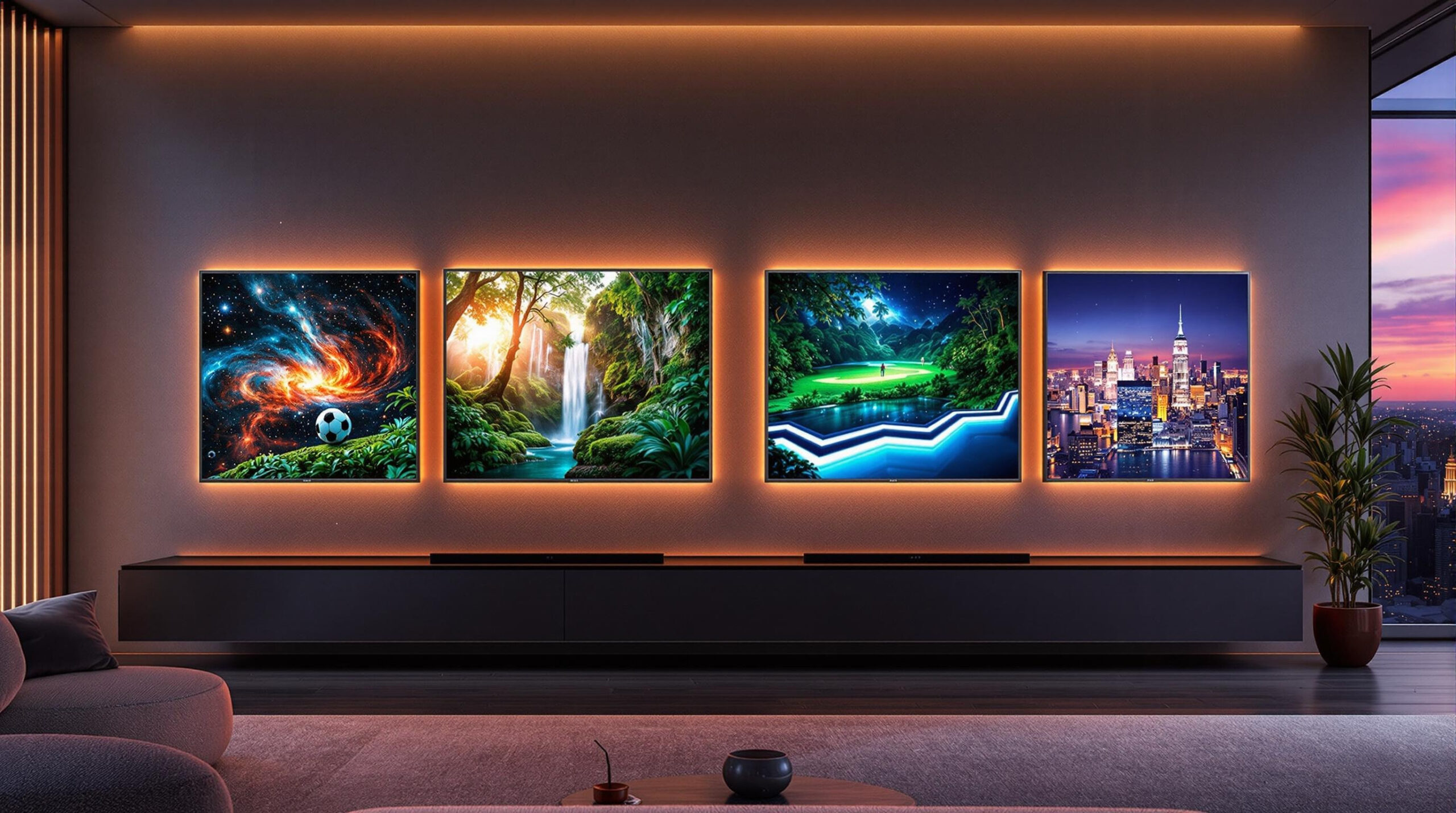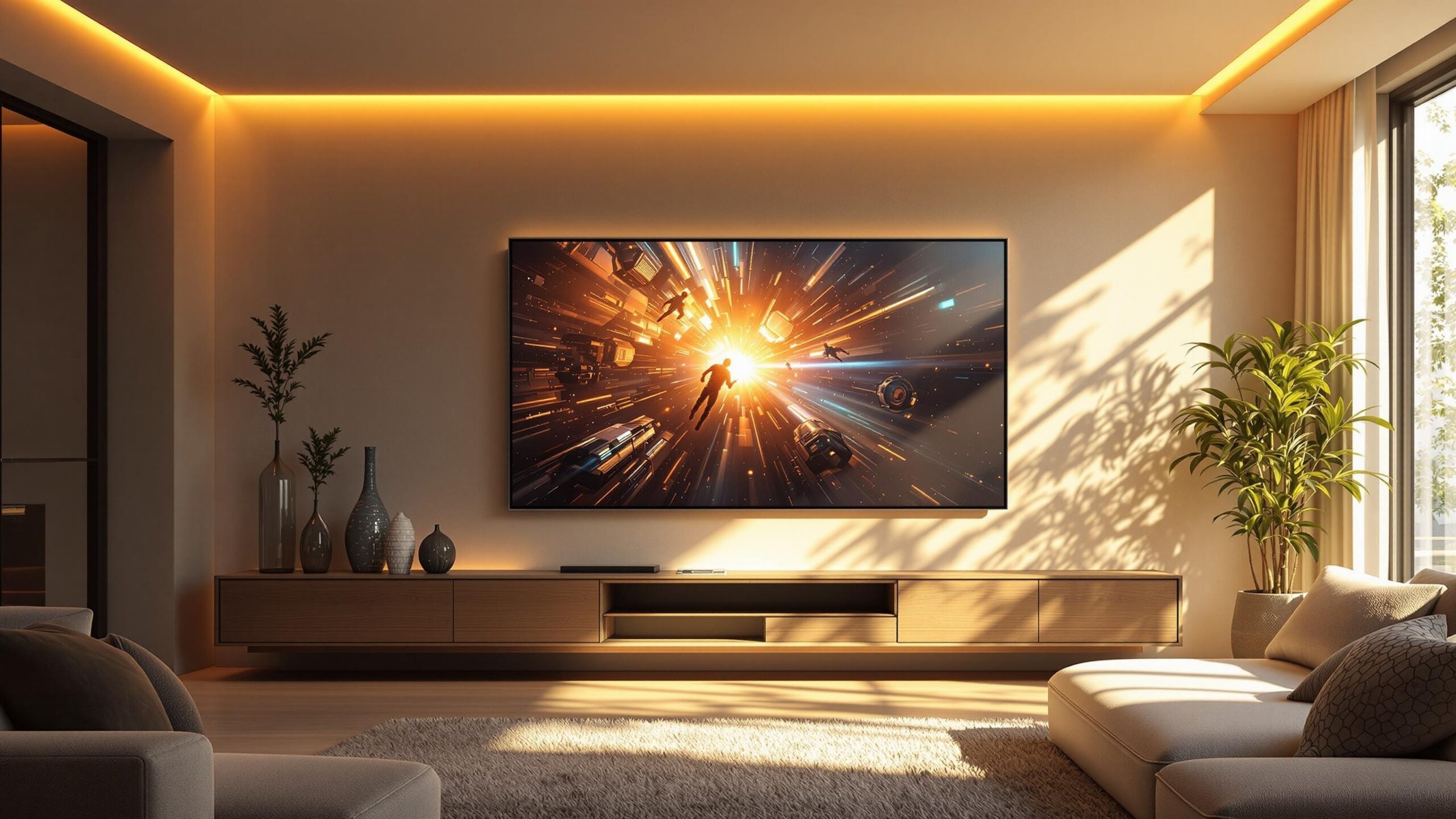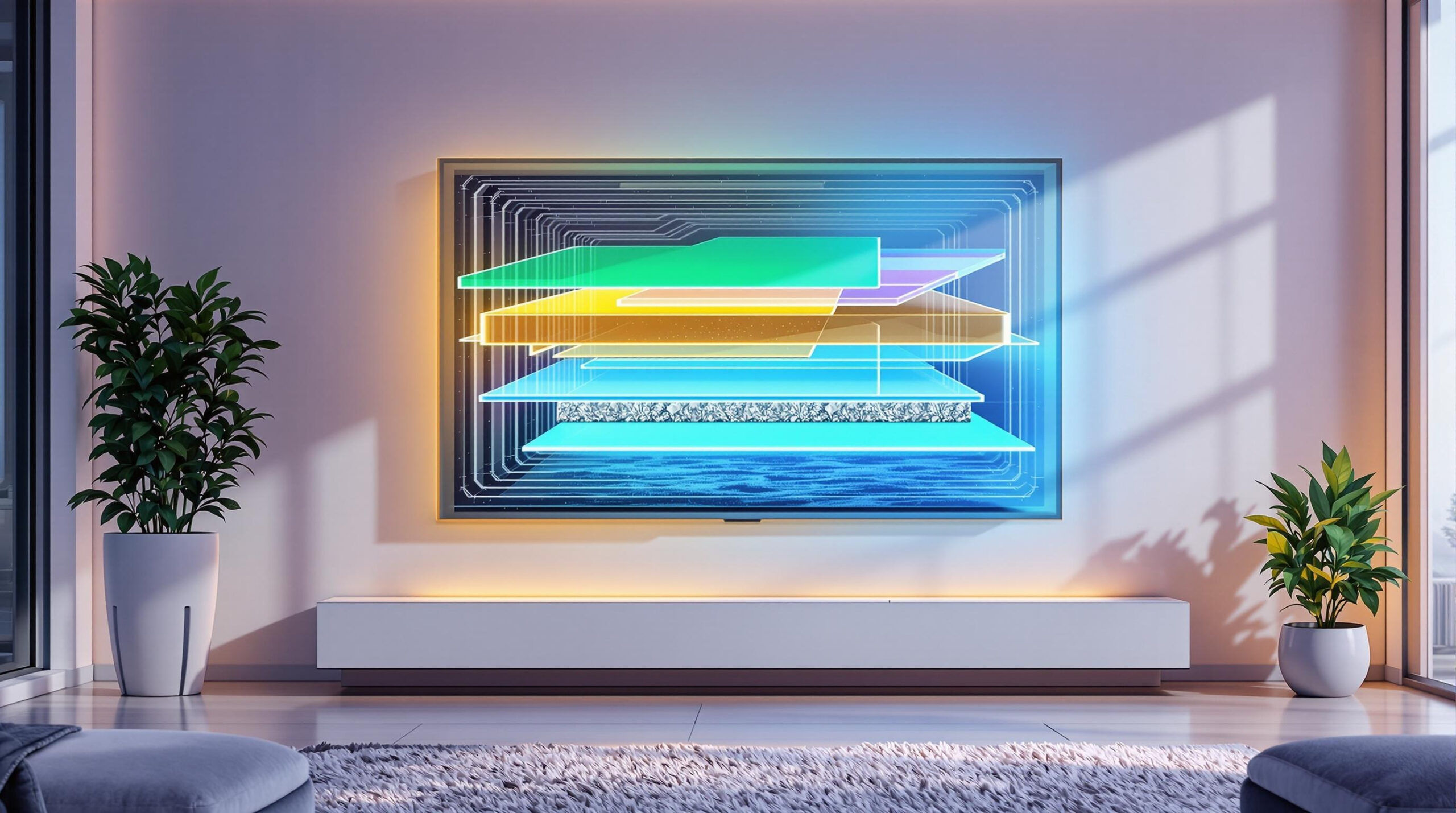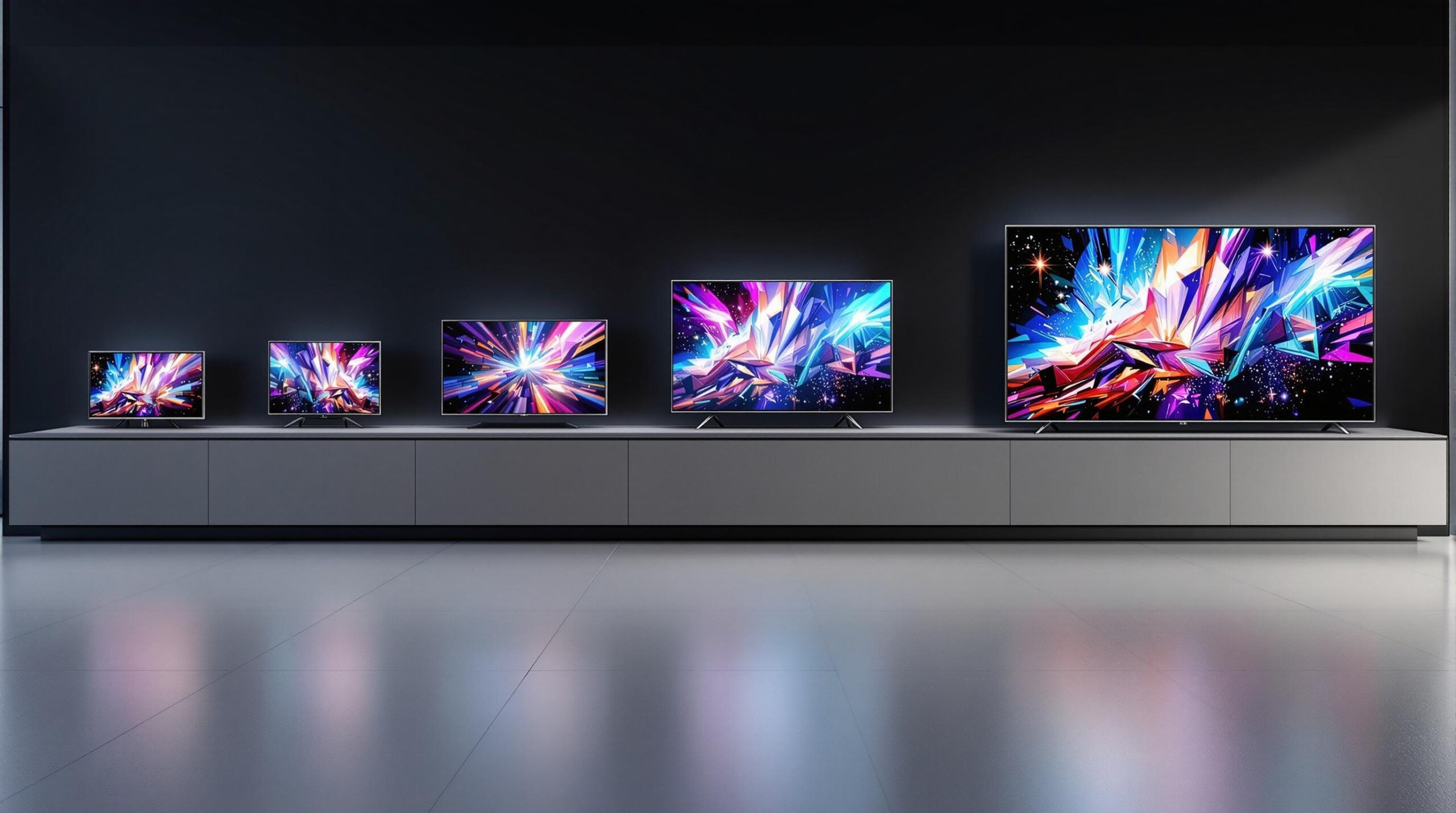Introduction: Where Affordability Meets Engineering Excellence
In the ever-evolving world of display technology, LED TVs have reached a point of refinement that makes them not only competitive with OLED and QLED technologies, but in many cases, more accessible to a broader range of consumers. While premium models flaunt cutting-edge capabilities like Mini-LED backlighting or MicroLED arrays, it is the mid-range and budget-tier LED TVs—those providing the best value—that represent the remarkable intersection of engineering efficiency, materials science, and image fidelity. This article unpacks the physics and chemistry that power today’s most cost-effective LED TVs from major brands like Samsung, LG, Sony, Hisense, and TCL—offering a deep, technical understanding of what makes these displays so compelling without overwhelming the layperson.
Understanding value in LED TVs requires more than a price tag. It involves knowing how light is manipulated, how color is created and refined, and how software algorithms translate input into visual perception. Let’s explore the foundations that make LED TVs such a powerful blend of science and savings.
The Science Behind LED Backlighting: How Light is Made and Managed
At the heart of every LED TV is a backlight system, which is fundamentally different from OLEDs where each pixel emits its own light. In an LED TV, the light is generated by Light Emitting Diodes (LEDs), which are semiconductors that release photons when electrons fall into lower energy states—this is the phenomenon known as electroluminescence.
The chemistry of the LED material determines the color of emitted light. Most white LEDs in TVs use a blue Gallium Nitride (GaN) LED paired with a yellow phosphor coating, typically made from cerium-doped yttrium aluminum garnet (YAG:Ce). The blue light from the LED excites the phosphor, which emits yellow light; the combination produces white. Some high-end models use quantum dots to purify and broaden the color spectrum, but even without them, well-engineered white LED systems can deliver strong brightness and decent color range.
The positioning of these LEDs also affects performance. Budget LED TVs often use Edge-Lit LED backlighting, where LEDs are placed along the frame’s edges and light is diffused across the screen with a light guide plate. This method reduces cost and thickness but can result in uneven brightness. Direct-Lit LED systems position LEDs behind the panel in a matrix, enabling more consistent illumination. Full Array Local Dimming (FALD)—available in some value models—takes this one step further by dividing the backlight into controllable zones, allowing darker blacks and higher contrast.
The LCD Matrix: How LED Light Becomes a Picture
Though often called LED TVs, these displays are technically LCDs with LED backlights. The image itself is created by a Liquid Crystal Display (LCD) layer. Liquid crystals are organic molecules that twist when subjected to electric fields, controlling the passage of polarized light. The basic unit of display—the pixel—is subdivided into red, green, and blue subpixels. These are colored via filters, and their brightness is modulated by the orientation of the liquid crystals, which in turn adjusts the polarization of light passing through.
This phenomenon relies on birefringence, an optical property where the refractive index changes based on polarization and propagation direction. When light passes through a liquid crystal layer with a specific voltage applied, the molecular alignment changes, altering the light’s phase angle. This modulates how much light gets through the final polarizing filter.
In lower-cost LED TVs, manufacturers often use Twisted Nematic (TN) or Vertical Alignment (VA) LCD panels. VA panels, in particular, are common in value-oriented sets due to their high native contrast—an intrinsic result of the way VA crystals block light more effectively in the “off” state. However, they may suffer from narrow viewing angles. Some slightly higher-tier models use In-Plane Switching (IPS) panels, which offer wider viewing angles by rotating liquid crystals parallel to the screen surface, albeit at the cost of contrast.
Color Science and Enhancement: From Spectra to Perception
Color reproduction is a battleground where physics, human biology, and perceptual psychology converge. Since white LEDs (even with phosphors) don’t produce perfectly broad spectrums, achieving accurate and vivid color requires a series of optical and algorithmic enhancements.
Most LED TVs apply color filters aligned with red, green, and blue wavelengths—usually made from organic dyes or inorganic materials such as cadmium-free quantum dots or metal oxide films. These filters ensure that only the desired color wavelengths pass through, forming the building blocks of the displayed image.
However, color is not only a function of wavelength accuracy. Color volume—how well a TV can reproduce vivid colors at varying brightness levels—is a key metric. Low-end TVs may display accurate colors in moderate lighting but fall short when pushed to higher luminance, where white LEDs may wash out or clip the spectrum. Brands like TCL and Hisense now incorporate Wide Color Gamut (WCG) technology using quantum dot enhancement films (QDEF), which emit very narrow red and green wavelengths when excited by blue LED light. This approach significantly improves saturation and purity, even in models under $700.
The final layer of enhancement is computational. Color mapping algorithms and 3D LUTs (Look-Up Tables) convert standard RGB signals into accurate values based on display calibration. Budget TVs may use simplified LUTs, but models with Dolby Vision or HDR10+ employ dynamic metadata and tone mapping to adjust brightness and contrast frame-by-frame, boosting visual fidelity even in cost-effective sets.
Resolution and Sharpness: Engineering Clarity in Pixel Architecture
Nearly all modern LED TVs offer 4K resolution, or 3840×2160 pixels, which provides four times the detail of Full HD (1080p). The clarity is achieved not merely by having more pixels, but by minimizing pixel crosstalk, reducing backlight leakage, and maintaining signal integrity throughout the panel’s drive circuitry.
High-value LED TVs use Oxide TFTs (Thin-Film Transistors) made from materials like Indium Gallium Zinc Oxide (IGZO), which offer higher electron mobility than traditional amorphous silicon. This results in faster switching times, lower leakage current, and more stable grayscale rendering, even in fast-moving scenes.
Another underrated factor is pixel aperture ratio, or the percentage of each pixel dedicated to light transmission. A higher aperture ratio increases brightness efficiency, which is crucial in lower-end models that must compete with ambient light despite limited luminance budgets.
The sharpness of the final image also depends on image processing algorithms, particularly upscaling engines that interpolate lower-resolution content into 4K. Sony’s X-Reality PRO and Samsung’s Crystal Processor 4K use machine learning to restore textures and suppress noise. This ensures that HD and SD content still appears crisp and artifact-free on modern LED panels, even without native 4K sources.
Motion Clarity and Refresh Rate: The Physics of Frame Precision
One of the biggest differentiators between cheap and great LED TVs is how they handle motion. While most value LED TVs operate at 60Hz natively, they employ various motion interpolation and black frame insertion techniques to simulate smoother movement.
The foundation of motion clarity is response time—how quickly a pixel can shift from one color to another. Slower response times lead to motion blur and ghosting. VA panels tend to be slower than IPS, though advances in liquid crystal chemistry and drive voltage optimization have narrowed this gap.
To enhance perceived motion, TVs use MEMC (Motion Estimation, Motion Compensation), which calculates intermediate frames between actual video frames. Although this can sometimes introduce the “soap opera effect,” when implemented well (as in Sony and LG’s value ranges), it dramatically improves sports and fast-paced video playback.
Additionally, backlight scanning techniques reduce perceived blur by rapidly turning off portions of the LED backlight during motion transitions. This mimics the effect of a CRT strobe and improves sharpness in motion, especially when paired with high-performance drive circuitry.
HDR and Contrast Engineering: Extracting Depth from Brightness
High Dynamic Range (HDR) is one of the most transformative technologies in modern LED TVs, dramatically expanding contrast, color, and peak brightness. However, effective HDR requires both hardware and algorithmic support.
From a hardware standpoint, the local dimming capability of the backlight is key. Full Array Local Dimming (FALD) uses a grid of individually controllable LED zones to modulate brightness more precisely across the screen. This allows for simultaneous deep shadows and brilliant highlights. Budget models with edge lighting cannot replicate this fidelity but may use global dimming algorithms to simulate improved contrast.
The HDR experience is further amplified by nits output, or how bright a screen can get. While high-end models surpass 1000 nits, many value LEDs reach respectable levels of 400–600 nits—enough for impactful HDR10 and Dolby Vision rendering. These formats also use EOTFs (Electro-Optical Transfer Functions) to map digital luminance to actual screen brightness in a way that matches human perception, maximizing dynamic range without causing eye strain or blown-out highlights.
Advanced processing chips are responsible for applying this metadata dynamically. Hisense’s ULED engine, for instance, uses AI-driven scene analysis to adjust tone mapping, while TCL’s AiPQ engine applies real-time optimization to color balance and black levels based on detected content type.
Smart TV Systems and AI Optimization: Marrying Hardware and Software
A television’s visual potential is only as good as its system-on-chip (SoC) and software layer. Most modern value TVs run operating systems like Google TV, Tizen, webOS, or Fire TV. These platforms provide app ecosystems, voice control, and user interfaces, but also act as conduits for machine learning enhancement features.
AI is increasingly integrated into mid-range LED TVs, particularly in content recognition and scene-based tuning. Processors like LG’s α5 AI Processor or Samsung’s Crystal Processor not only manage display tasks but also analyze real-time video input to optimize contrast, color, and sharpness without manual calibration.
The smart TV layer also manages energy consumption algorithms, screen dimming for static content, and ambient light sensors to adjust display luminance based on room conditions. This holistic approach to display performance makes even budget-tier TVs feel responsive and adaptive, leveraging software sophistication to mask hardware limitations.
Conclusion: Engineering the Future of Value-Driven LED Displays
LED TV technology is a marvel of engineering synergy—where physics, chemistry, electronics, and computational science intersect to deliver stunning visuals on a budget. The best value LED TVs in 2025 are not merely cheaper alternatives; they are the product of relentless innovation in backlighting precision, color enhancement, motion handling, and intelligent processing.
Brands like Samsung, LG, Sony, Hisense, and TCL are no longer just competing on cost. They are optimizing panel architectures, enhancing light diffusion physics, fine-tuning algorithms, and incorporating high-level AI to deliver performance once reserved for elite displays.
For the consumer, this means you no longer need to sacrifice fidelity for affordability. Understanding the science behind these displays empowers you to choose wisely—prioritizing true picture quality metrics like contrast ratio, peak brightness, color volume, and motion clarity over flashy marketing claims.
In the golden age of value engineering, LED TVs have matured into technological showcases—where precision optics, quantum chemistry, and real-time data analysis converge to turn light into lifelike storytelling.
LED/LCD TV Reviews
Explore Philo Street’s Top 10 Best LED/LCD TV Reviews! Dive into our comprehensive analysis of the leading OLED TV products, complete with a detailed side-by-side comparison chart to help you choose the perfect protection for your devices.




